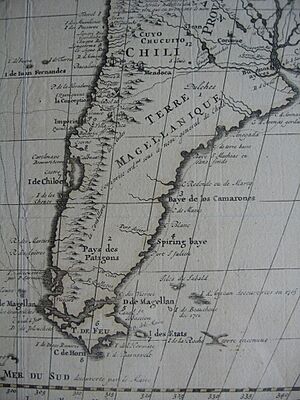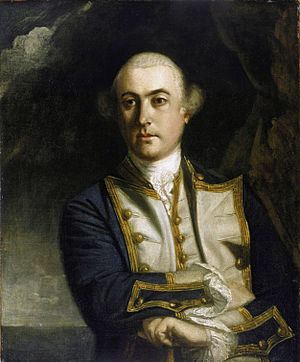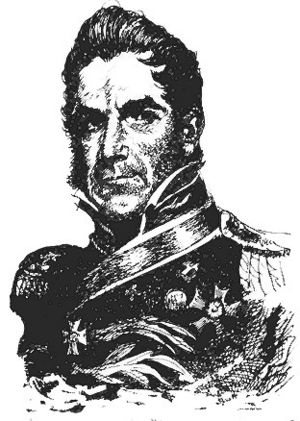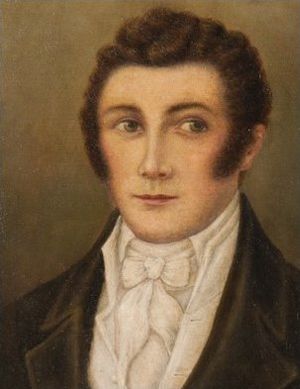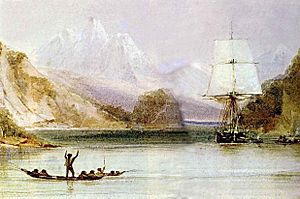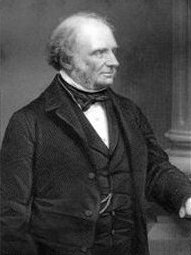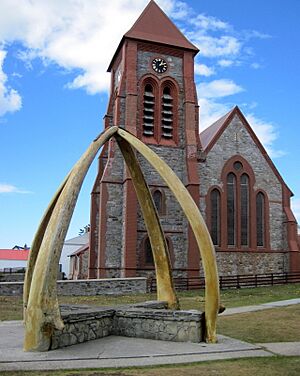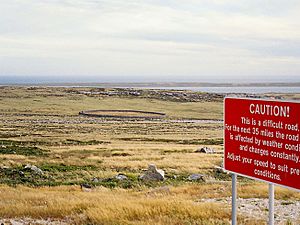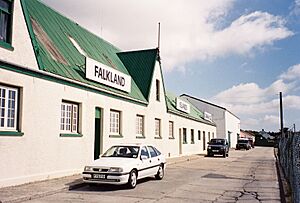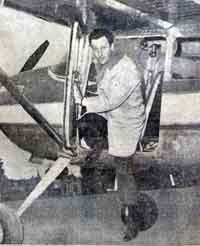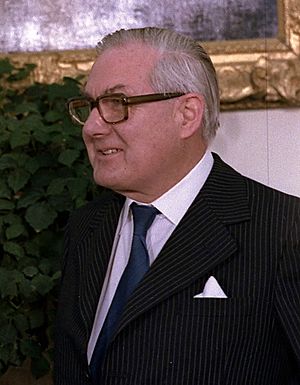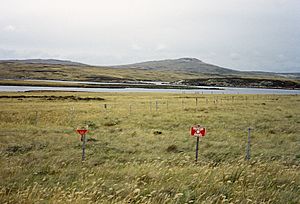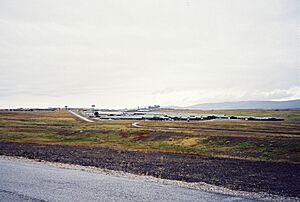History of the Falkland Islands facts for kids
The history of the Falkland Islands (also known as the Islas Malvinas in Spanish) goes back over 500 years. These islands have been a topic of disagreement, with claims made by the French, British, Spanish, and Argentines at different times.
When Europeans first arrived, the islands had no people living on them. France started a colony in 1764. A year later, in 1765, a British captain claimed the islands for Britain. In 1770, Spain sent ships and soldiers from Buenos Aires, forcing the British to leave Port Egmont. Britain and Spain almost went to war over the islands. However, Britain decided to pull back from many overseas settlements in 1774.
Spain managed a military post on East Falkland until 1811. They had to leave because of the war for Argentine independence. Later, Luis Vernet tried to start a settlement in 1826. Many of his settlers left in 1831 after a raid by the USS Lexington. Argentina's attempt to create a prison colony in 1832 failed due to a rebellion. In 1833, the British returned to the Falkland Islands. Argentina invaded the islands on April 2, 1982. The British sent a military force that made the Argentines surrender.
Contents
Early Visitors to the Falkland Islands

When sea levels were much lower during the Ice Age, the Falkland Islands might have been connected to South America.
People from Fuegian tribes in Patagonia might have visited the Falklands. However, no one lived on the islands when Europeans found them. Some arrowheads and parts of a wooden canoe have been found. These suggest that the Yaghan people from Tierra del Fuego might have traveled to the islands. We don't know if these were one-time trips. There are no signs of old buildings or structures from before Europeans arrived.
Some people thought the presence of the Falkland Islands wolf (also called the warrah) meant people lived on the islands before Europeans. But this idea is debated. The warrah was seen by Charles Darwin but is now extinct.
The islands had no native trees when discovered. All modern trees were brought by Europeans.
European Discovery of the Islands
Maps from the early 1500s show islands in the area of the Falklands. Some researchers think an unknown Portuguese expedition might have seen the islands around 1516. These maps show islands called Sanson in a place that could be the Falklands.
Some believe Ferdinand Magellan or Estêvão Gomes might have seen the islands. They were part of an expedition that looked for supplies. However, the official record of Magellan's trip makes this less likely.
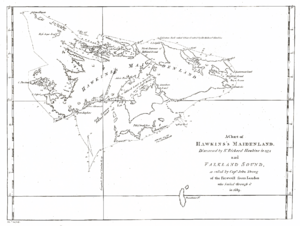
The name of the islands comes from Lord Falkland. He was a British official who helped organize the first trip to the South Atlantic to explore the islands.
In 1592, English explorer John Davis was sailing near what is now southern Argentina. A big storm hit his ship, and he found shelter among "certain Isles never before discovered." He didn't give the exact location, but they were likely the Falklands.
In 1594, English commander Richard Hawkins might have visited the islands. He called a group of islands "Hawkins' Maidenland." But the location he gave was a bit off, and his description of the shore makes his claim uncertain.
On January 24, 1600, the Dutchman Sebald de Weert visited the Jason Islands. He called them the Sebald Islands. This name was used for the entire Falkland Islands for a long time. The location De Weert gave was very accurate for the Falkland Islands.
In 1690, English Captain John Strong sailed between the two main islands. He named this passage "Falkland Channel" (now Falkland Sound). He named it after Anthony Cary, 5th Viscount Falkland, who helped fund his trip. The entire group of islands later got its name from this channel.
Early Settlements
The French explorer Louis Antoine de Bougainville started a colony at Port St. Louis on East Falkland in 1764. The French called the islands Îles Malouines. This name came from the French port of Saint-Malo. The Spanish name Islas Malvinas is a translation of the French name.
In 1765, Captain John Byron explored Saunders Island near West Falkland. He didn't know the French had already settled on East Falkland. He found a natural harbor, named it Port Egmont, and claimed the islands for Britain. The next year, Captain John MacBride set up a lasting British settlement there.
In 1766, France agreed to leave the islands. This was because Spain complained that the French were in territories Spain believed were theirs. Spain paid Louis de Bougainville for his settlement. In 1767, Spain took control of Port St. Louis and renamed it Puerto Soledad.
In 1770, a Spanish commander, Don Juan Ignacio de Madariaga, visited Port Egmont. He returned with five armed ships and 1,400 soldiers, forcing the British to leave Port Egmont. This caused a serious disagreement between Britain and Spain, and they almost went to war. But conflict was avoided, and the British colony was re-established. Port Egmont quickly became an important stop for British ships sailing around Cape Horn.
Due to money problems from the upcoming American War of Independence, Britain decided to pull back from many overseas settlements in 1774. On May 20, 1776, British forces left Port Egmont. They left a plaque saying Britain still owned the islands. Spanish authorities later ordered the British colony to be destroyed in 1780.
Spain left the islands in 1811 because of the Napoleonic invasion and the Argentine War of Independence. The Spanish military post at Puerto Soledad was moved to Montevideo. Like the British, the Spanish also left a plaque claiming ownership of the islands. After this, the Falkland Islands became empty of people.
Between European Colonies
After the Spanish left, the Falkland Islands became a place for whalers and seal hunters. They used the islands for shelter from bad weather in the South Atlantic. The Falklands were often a last safe place for ships damaged at sea. British and American sealers were the most common visitors. There were often 40 to 50 ships, with up to 1,000 sailors, hunting fur seals.
Argentine Attempts to Settle
In March 1820, a ship called Heroína, working for the United Provinces of the River Plate (an early Argentina), sailed to capture Spanish ships. A storm damaged the Heroína, forcing its commander, American Colonel David Jewett, to stop at Puerto Soledad for repairs in October 1820.
Jewett asked for help from British explorer James Weddell. Jewett told Weddell that he had come to take possession of the islands for the United Provinces. He said his goal was to protect the islands' resources and help ships get supplies.
On November 6, 1820, Jewett raised the flag of the United Provinces of the River Plate. He claimed the islands for what would become Argentina. Weddell reported that Jewett "took formal possession of these islands... read a declaration... and fired a salute of twenty-one guns."
Jewett left the Falkland Islands in April 1821. He had spent about six months there.
Luis Vernet's Settlement
In 1823, the United Provinces of the River Plate gave fishing rights to Jorge Pacheco and Luis Vernet. Vernet tried to start a settlement in 1824, but it failed. His second attempt in 1826 was also unsuccessful. Vernet knew Britain also claimed the islands. He asked for permission from the British before going to the islands.
In 1828, the United Provinces government gave Vernet all of East Falkland. They said he wouldn't have to pay taxes if he could start a colony within three years. Vernet brought settlers, including British Captain Matthew Brisbane. Before leaving, he again asked for permission from the British in Buenos Aires. The British asked him to report on the islands and requested British protection if they returned.
On June 10, 1829, Vernet was named 'civil and military commandant' of the islands. He was also given special rights to hunt seals. Britain protested this. By 1831, Vernet's colony was doing well enough to advertise for new settlers. However, an American ship later reported that conditions on the islands were quite bad.
USS Lexington Raid
In 1831, Vernet tried to enforce his seal hunting rights. He captured American ships. In response, the United States sent Captain Silas Duncan of USS Lexington to get the property back. Duncan found proof that American fishing ships had been captured. He took seven prisoners and accused them of piracy.
Duncan also took most of the people living on the Falklands, about 40 persons, except for some cowboys. These people were mainly German citizens from Buenos Aires. They seemed happy to leave the "desolate region." However, about 24 people, mostly cowboys and some Charrúa Indians, stayed on the island.
The Lexington logbook says they destroyed weapons and a powder storage. Later, settlers said there was great damage to private property. Luis Vernet later claimed that his settlement was destroyed by this raid.
Prison Colony and Rebellion
After the Lexington incident, the Buenos Aires government sent Major Esteban Mestivier to set up a penal colony (prison colony). He arrived on November 15, 1832. But his soldiers rebelled and killed him. French sailors stopped the rebellion. In 1833, Major José María Pinedo took charge of the settlement.
British Return
Argentina's claims to the islands made Britain send a naval force to return to the islands for good.
On January 3, 1833, Captain James Onslow, on the ship HMS Clio, arrived at Vernet's settlement. He asked that the Argentine flag be replaced with the British one and for the Argentine administration to leave. Major José María Pinedo, the Argentine commander, wanted to fight. But he knew he was outnumbered, especially since many of his crew were British and didn't want to fight their own people. So, he protested but left peacefully on January 5. Argentina claims Vernet's colonists were also forced out. However, records from that time suggest the colonists were encouraged to stay under British authority.
Britain's first plans for the islands were to keep Vernet's settlement going. An Irish-Argentine immigrant, William Dickson, was made the British representative. He was given a flagpole and flag to fly when ships were in the harbor. In March 1833, Matthew Brisbane, Vernet's deputy, returned. Captain Robert FitzRoy of HMS Beagle (who was in the harbor) encouraged Brisbane to continue Vernet's work. He said that private businesses were welcome, but Argentine claims of ownership were not.
Brisbane took charge of Vernet's settlement again. He continued paying workers with special notes. Because Vernet's power was reduced, these notes lost value. This made the workers unhappy. In August 1833, a group of cowboys and Indians led by Antonio Rivero attacked the settlement. They killed five people, including Dickson and Brisbane. The survivors fled and were later rescued by a British ship.
Lt Henry Smith became the first British resident in January 1834. He arrested Rivero's group for the murders. The group was sent to London for trial. But they couldn't be tried because British courts didn't have authority over the Falkland Islands at that time. Later, Rivero became a folk hero in Argentina, seen as leading a rebellion against British rule. However, Rivero's actions actually caused the end of Vernet's settlement on the Falklands.
Charles Darwin visited the Falklands again in 1834. The settlements of Darwin and Fitzroy are named after this visit.
After Rivero's arrest, Smith began to fix the settlement at Port Louis. He renamed it 'Anson's Harbour'. Other British officers took over after Smith.
Vernet later tried to return to the islands but was not allowed. The British government did not keep its promises to him. Eventually, Vernet received a small payment for horses he had shipped to Port Louis years before.
British Settlement
After returning to the Falkland Islands in 1833, the British kept Port Louis as a military outpost. They didn't try to start a new colony right away. Instead, they relied on what was left of Vernet's settlement. Lt. Smith, the British representative, received little support from the Royal Navy. He had to use armed cowboys to keep order and protect British interests. Smith even got advice from Vernet and managed Vernet's property. His bosses later criticized him for trying to develop the small settlement. Smith resigned, and the settlement began to struggle.
In 1836 and 1837, East Falkland was surveyed. Admiral George Grey described the islands as "dreary enough" and looking like a "Scotch moor on a winter's day."
A British merchant named G. T. Whittington pushed for the islands to become a colony. He formed a company and published a pamphlet about the Falkland Islands. London merchants also asked the British government to discuss the islands' future. Whittington asked Lord Russell, the Colonial Secretary, to let his company colonize the islands. In May 1840, the British government decided to colonize the Falkland Islands.
Whittington, not knowing about the government's decision, sent his brother, J. B. Whittington, to land supplies and settlers at Port Louis. He claimed land his brother had bought from Vernet. The British officer there was surprised but couldn't stop them from landing. Whittington built a large house and started a fish-salting business.
Building Port Stanley
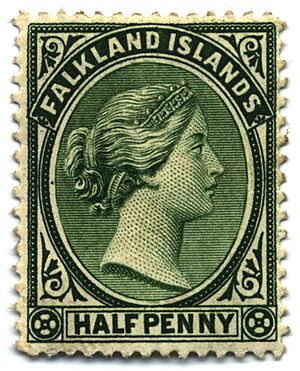
In 1833, the United Kingdom took control of the Falkland Islands. Richard Clement Moody, a respected engineer, was appointed Lieutenant Governor. This job was renamed Governor of the Falkland Islands in 1843. Moody arrived in October 1841 with soldiers and their families. With Whittington's settlers, the population of Anson's Harbour grew to about 50 people. Moody worked to build up the islands' basic services, like offices, a school, and roads.
In 1842, Moody was asked to find a good spot for a new capital city. He assigned this task to Captain Ross. Ross reported that the Port William area was good for ships, and the southern shores of Port Jackson were suitable for a settlement. Moody agreed, and construction of the new settlement began in July 1843. In July 1845, the new capital was officially named Port Stanley after Lord Stanley. Not everyone liked the choice. J. B. Whittington famously called it "one of the worst" places for a town.
The Colonial Government was set up in 1845. Work began on Government House. The first government officers started their jobs the next year. Stanley became a very busy port in the 1840s, partly because of the California Gold Rush. Many ships stopped there for supplies and repairs. The Falkland Islands are known for many old shipwrecks from the 1800s. These ships were too damaged to sail and were often used as floating warehouses.
Stanley was once one of the world's busiest ports. However, the ship repair business slowed down after 1876. It declined further with the rise of reliable iron steamships in the 1890s. The opening of the Panama Canal in 1914 made the route around Cape Horn less important, hurting Stanley's trade. Still, Port Stanley remained busy supporting whaling, sealing, and later fishing and cruise ship industries.
Government House opened in 1847. It became the Governor's home in 1859 and still is today.
Many colonists moved from Anson's Harbour to Port Stanley. The town grew quickly, reaching 200 people by 1849. More people arrived, including 30 married Chelsea Pensioners (retired soldiers) and their families. The Royal Falkland Islands Police was created in November 1846. The Chelsea Pensioners became the permanent military and police force.
The Exchange Building opened in 1854. In 1887, Jubilee Villas were built to celebrate Queen Victoria's 50 years on the throne. These brick houses became a famous image during the Falklands War.
Peat (a type of soil used as fuel) is common on the islands. Too much digging for peat caused landslides in 1878 and 1886. The 1886 landslide killed two women and destroyed the Exchange Building.
Christ Church Cathedral was started in 1892 and finished in 1903. Its famous whalebone arch, made from two blue whale jaws, was added in 1933. It marked 100 years of continuous British rule.
Developing the Islands
After the British settled, new British communities started. Many were for hunting the wild cattle on the islands. After Cheviot sheep were brought in 1852, sheep farming became the main type of farming.
Salvador Settlement was one of the first, started in the 1830s by an immigrant from Gibraltar. His family still runs it today.
Wild Cattle were mostly in the southern part of East Falkland, called Lafonia. Samuel Fisher Lafone, a British merchant, got special rights to hunt these cattle in 1846. This meant new settlers couldn't get cattle, and Stanley depended on Lafone for beef. In 1849, a wall was built at Darwin to control cattle movement.
Lafone's business grew, and in 1850, his company became The Falkland Islands Company Limited. By 1852, the wild cattle were almost all gone. The company then switched to sheep farming. In 1860, the company was given land in Lafonia. Hunting cattle without permission was banned.
In the second half of the 1800s, places like Darwin, Goose Green, Fox Bay, and Port Howard were established. Darwin was first for cowboys and cattle farmers. But sheep farming took over, and Scottish shepherds were brought in.
The 1900s
Connecting the Islands
The first telephone lines were put in by a company in the 1880s. But the Falkland Islands Government was slow to use telephones. In 1897, a line was put between the lighthouse and the police station. The islands' isolation ended in 1911 when Guglielmo Marconi installed a wireless telegraphy station. This allowed telegrams to be sent to Uruguay.
A telephone line was built between Darwin and Stanley from 1906 to 1907. It was almost 50 miles long. This line was mainly for business, but the public could sometimes make calls. More lines were laid to most major settlements. Communication relied on this telephone network until radio telephones came in the 1950s. After the Falklands War, communications improved greatly with a new earth station for direct calls. In 1997, Internet service started.
Economic Growth
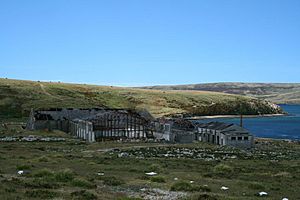
In 1911, the islands had 3,275 people, with 916 living in Port Stanley. A canning factory opened in 1911 at Goose Green. It was very successful at first, processing many sheep. But it closed in 1921 after a tough economic period.
Despite this, Goose Green grew. In 1922, it became the base for the Falkland Islands Company's sheep farm. A huge sheep shearing shed was built in 1927. It is said to be the world's largest, holding 5,000 sheep.
In the mid-1900s, there were attempts to make the islands' economy less dependent on sheep farming. For example, Port Albemarle was expanded to restart the old sealing industry. But it didn't work because seal numbers were too low.
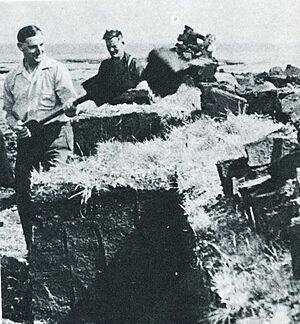
Similarly, Ajax Bay was developed in the 1950s as a refrigeration plant to freeze Falkland mutton. This also proved too expensive to be profitable. Many of the houses there were moved to Stanley.
Before the Falklands War, the seas around the islands were not well protected. Many foreign boats fished there, and the islands lost money. Fishing licenses were only introduced later.
Education
In 1956, a school was built at Port Howard. Until the 1970s, Goose Green had a boarding school run by the government. Children from the countryside ("Camp") stayed there. The boarding school later moved to Stanley. During the Falklands War, the school building became an Argentine headquarters and was burned down. A new day school has since been built for local children.
First World War

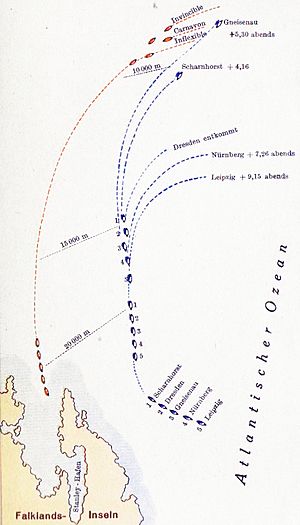
Port Stanley became an important place for the Royal Navy to get coal. This led to ships based there being involved in major naval battles in both the First and Second World Wars.
The importance of the Falkland Islands was shown in the Battle of the Falkland Islands during the First World War. German Admiral von Spee's ships came to the islands to destroy the British radio station and coal supply. But a powerful British squadron was already there, getting coal. In the battle that followed, most of von Spee's ships were sunk.
Second World War
The Falkland Islands Defence Force prepared gun positions and signal posts around Stanley when Britain declared war on September 3, 1939. Patrols were carried out in the countryside, and coast-watching stations were set up to watch for enemy ships. Falkland Islanders faced similar wartime difficulties as people in Britain, like blackouts and rationing.
In December 1939, after the Battle of the River Plate, the British ship HMS Cumberland joined other British ships near the River Plate. They trapped the German ship Admiral Graf Spee. The German captain decided to sink his own ship rather than face the British Navy.
Operation Tabarin, an expedition to the Antarctic, was launched from the islands during the war. Its goal was to confirm Britain's claims on the continent and collect scientific data.
In 1942, more forces were sent to the islands to protect them from a possible Japanese invasion. In 1944, with less threat from Japan, a smaller group of soldiers replaced them.
More than 150 Falkland Islanders, out of a population of only 2,300, joined the British armed forces. Twenty-four of them did not return. The Falkland Islands also gave five Supermarine Spitfire planes to the British Royal Air Force.
Argentine Actions
After the war, there was an attempt by Argentine President Juan Perón to buy the Falkland Islands in 1953. Britain rejected this idea. However, in the 1960s, a series of events showed Argentina's stronger claims to the islands.
The first incident was in 1964. A small plane piloted by Miguel Fitzgerald landed on the racecourse in Stanley. He gave a letter claiming ownership to an islander before flying away. This stunt happened at the same time Argentina was talking to the UN about decolonization.
A more serious event happened on September 28, 1966. Eighteen young Argentines hijacked an airliner and landed it in Stanley. They called this action Operativo Cóndor. They raised Argentine flags and took four islanders hostage.
The plane had taken off from Buenos Aires. Two armed men forced the pilot to fly to the Falklands. The plane crashed while trying to land. Islanders thought the plane was in trouble and rushed to help. But they found themselves taken hostage. The acting Governor ordered the plane to be surrounded. The hijackers surrendered after a cold night. They were held for a week and then sent back to Argentina for trial.
In October of the same year, Argentine naval special forces secretly landed from a submarine. This 12-man team landed about 40 km from Stanley.
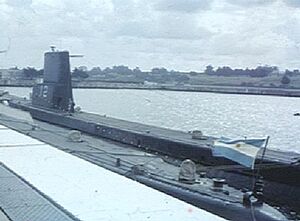
In November 1968, Miguel Fitzgerald tried to land in Stanley again. He was with one of the 1966 hijackers. But he couldn't land at the racecourse because of obstacles. The plane crash-landed on a road, but no one was hurt. This event happened when a British official, Lord Chalfont, was visiting the islands.
This last incident actually hurt Argentina's efforts. Islanders made it clear to Lord Chalfont that they rejected an agreement between Britain and Argentina. This agreement said Britain would discuss ownership if the islanders' wishes were respected. This led to the formation of the Falkland Islands Committee, which worked to protect the islanders' wishes. In December 1968, the British government stated that the islanders' wishes would be most important.
Growing Connections with Argentina
Because of diplomatic pressure, economic and political ties with Argentina grew in the 1960s and 1970s. These ties ended after the Falklands War. Before the war, some islanders even sent their children to boarding schools in Argentina.
To make sure any talks about ownership met the islanders' wishes, Britain and Argentina agreed to measures to encourage dependence on Argentina. In 1971, they signed a communications agreement. This agreement set up direct air and sea links between the islands and Argentina. It also covered postal and telephone services. After this, the shipping link with Montevideo ended. Britain promised a passenger and cargo ship service to the mainland, but it never happened.
LADE, the airline run by the Argentine Air Force, started flights to the islands. At first, they used amphibious planes. In 1972, Argentina built a temporary airstrip near Stanley. Britain built a small permanent airstrip in 1976.
As part of the agreement, islanders had to travel through Argentina. They were forced to carry Argentine Identity Cards issued in Buenos Aires. Islanders hated these "white cards" because they felt like an Argentine passport. Tensions also rose because male Falkland Islanders would not have to join the Argentine Army. This implied that Falkland Islanders were Argentine citizens.
LADE opened an office in Stanley, and mail went through Argentina. Medical treatments not available on the islands were provided in Argentina. Scholarships were offered for study in Argentine cities. Spanish language teachers were also provided by Argentina. British officials in Stanley were told to build good relations between the Falkland Islands and Argentina.
The islands became more dependent on Argentina when the two governments agreed that Argentina's national oil company, YPF, would supply the islands with fuel.
Despite these tensions, relations between islanders and Argentines providing these services were friendly. Politics were generally avoided, and there was no real hostility between individuals.
On an international level, relations worsened in 1975. Argentina called Britain's colony in the Falkland Islands an "act of international piracy." Diplomatic relations between Britain and Argentina broke off but started again in 1976.
In October 1975, the British government asked Lord Shackleton to study the Falkland Islands' economy. Argentina reacted angrily and refused Lord Shackleton permission to travel through Argentina. Later, the ship carrying Shackleton to the islands was fired upon by an Argentine destroyer.
In 1976, after a military government took control of Argentina, Argentina secretly set up a military base on Southern Thule. It was discovered by a British ship in 1977. Britain protested but only diplomatically. British Prime Minister Jim Callaghan sent a naval force, including a nuclear submarine, to support the diplomatic efforts. However, Argentine aircraft and warships continued to bother ships fishing in Falkland waters.
Lord Shackleton's report in 1977 showed the islands' economy was not growing. But it said the islands contributed to the British economy and had potential for development. It suggested oil exploration, fishing, extending the Stanley runway, and improving roads. The report was mostly ignored at the time to avoid upsetting Argentina. A later version of the report in 1982, after the Falklands War, became the plan for the islands' economic development.
Falklands War
Argentina invaded the islands on April 2, 1982. Special forces landed and moved towards Government House in Stanley. They met little resistance. There was only a small force of 57 British marines and 11 sailors, plus the Falkland Islands Defence Force. Only one Argentine person died. This event gained huge international attention for the islands.
For a short time, the Falkland Islands were under Argentine control. This included Spanish signs and attempts to make islanders drive on the right side of the road. In many parts of the countryside, like Goose Green, islanders were under house arrest.
The British responded with a military force. They landed seven weeks later. After fierce fighting, they forced the Argentine military to surrender on June 14, 1982. The war had big consequences for the Argentine military government, which fell soon after.
Margaret Thatcher was the British Prime Minister at the time. Her government's decision to remove a British ship from the area is seen by some as a reason for the conflict. However, in the Falklands, she is seen as a hero because of her strong response to the invasion. Islanders celebrate Margaret Thatcher Day on January 10, and a road in Stanley is named after her.
After the War

After the war, Britain improved its facilities on the islands. It greatly increased its military presence, building a large base at RAF Mount Pleasant and a port at Mare Harbour. Britain also invested heavily in improving Stanley and transport around the islands. The population has grown in Stanley but decreased in the countryside. Since 2008, a regular ferry service has connected East and West Falkland.
A big change to the Falkland Islands' government came with the 1985 constitution. The Falkland Islands Government (FIG) became a self-governing dependency. Its members are elected by the people. The governor, who represents the British monarch, has no executive power. The Falkland Islands are effectively self-governing, except for foreign policy.
Connections with Argentina were cut after the war. Laws were made to stop Argentine citizens from buying land. The islands found a new trading partner in Chile, with flights to Punta Arenas. In recent years, Argentines have been allowed to visit the islands again, often to see military cemeteries.
Land mines were a problem for 38 years after the war. All land mines were cleared by November 2020.
In 1983, the UK passed a law giving full British citizenship to the islanders. Important people visited to show Britain's commitment to the islands. In 1985, the Falkland Islands and South Georgia and the South Sandwich Islands became separate territories.
Relations between the UK and Argentina remained difficult after 1982. The UK refused to talk about the islands' ownership. The UK also kept an arms ban against Argentina. Diplomatic relations were restored in 1989.
Relations improved further in the 1990s. In 1998, Argentine President Carlos Menem visited London. He restated Argentina's claims but said only peaceful methods would be used. In 2001, UK Prime Minister Tony Blair visited Argentina. He hoped the two countries could solve their differences. However, no talks on ownership happened during the visit.
More British Military Presence and New Bases
After the war, Britain still worried about future attacks. So, an aircraft carrier stayed near the islands with its Sea Harriers. The local airfield was prepared for jet aircraft.
The islands didn't have enough barracks for a permanent military force. So, the Ministry of Defence rented two former car ferries to use as floating barracks.
Later, the British government decided to build a new RAF base. This was a huge project. It included building the world's longest corridor, about half a mile long, connecting the barracks, dining areas, and recreation areas. Residents sometimes call the base "the Death Star" because of its size and confusing layout.
Mount Pleasant, west of Stanley, was chosen for the new base. The airfield opened in 1985 and became fully operational in 1986.
RAF Mount Pleasant is also the Falkland Islands' only international airport for civilians. Flights operate twice a week to RAF Brize Norton in the UK, with a stop at RAF Ascension Island. A Chilean airline also operates weekly flights from Santiago.
Trying to Diversify the Economy

Before the Falklands War, sheep farming was the only industry. Since the late 1980s, when two types of squid were found near the Falklands, fishing has become the largest part of the economy.
In 2011, Rockhopper Exploration announced plans for oil production to start in 2016. This would involve using floating production vessels. The oil is expected to be sold at a price similar to Brent crude oil.
Some small businesses tried at Fox Bay, including a market garden, a salmon farm, and a knitting mill.
Tourism is the second-largest part of the economy. The war brought the islands new fame. Now, tourists come to see wildlife and visit war sites. Cruise ships often visit, sometimes as part of trips to Antarctica. However, the islands are far away, and there are no direct flights to major cities, making them an expensive place to visit.
Protecting Nature
With growing interest in environmental issues, some nature reserves have been created. However, there are no national parks. In 1990, Sea Lion Island was sold to the Falkland Island Development Company. They had planted 60,000 stands of tussac grass, which is important because much of it has been eaten by grazing animals on the main islands. A similar trend happened on Bleaker Island, where the farm became "organic" in 1999. Also in the 1990s, Steeple Jason Island and Grand Jason Island were bought by a New York philanthropist, Michael Steinhardt. He later donated them to the Bronx Zoo-based Wildlife Conservation Society. He also gave money to build a conservation station.
See also
 In Spanish: Historia de las islas Malvinas para niños
In Spanish: Historia de las islas Malvinas para niños
- History of South Georgia and the South Sandwich Islands
- Origins of Falkland Islanders
- Puerto Soledad
- Sovereignty of the Falkland Islands
- The Falkland Islands Journal
- Timeline of the history of the Falkland Islands



